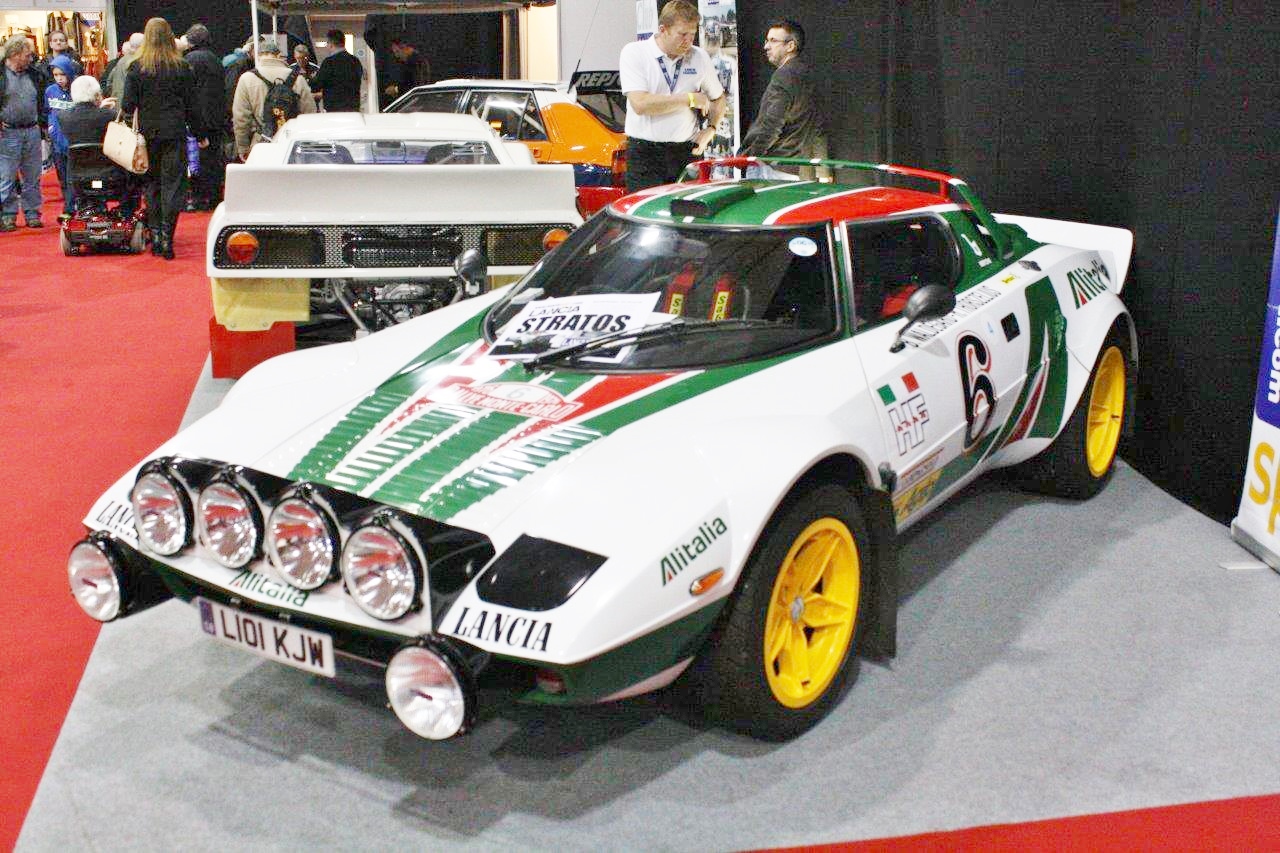-
Insurance
InsuranceAbout our productsLearn about insuringGet a quote Get current values, historical values, model history and more.
-
Valuation
ValuationHagerty valuation toolLook up a vehicle value Get current values, historical values, model history and more.
-
Events
EventsHagerty official eventsHagerty ClubhouseEvent calendar
-
Entertainment
EntertainmentMore to explore
- Portal login
1975 Lancia Stratos
HF Stradale Coupe 2.4 L
Vehicle values by condition
Fair
Condition 4
£353,000
#4 cars are daily drivers, with flaws visible to the naked eye. The chrome might have pitting or scratches, the windshield might be chipped.
Good
Condition 3
£438,000
#3 cars could possess some, but not all of the issues of a #4 car, but they will be balanced by other factors such as a fresh paint job or a new, correct interior.
Excellent
Condition 2
£507,000
#2 cars could win a local or regional show. They can be former #1 cars that have been driven or have aged. Seasoned observers will have to look closely for flaws.
Concours
Condition 1
£564,000
#1 vehicles are the best in the world. The visual image is of the best car, unmodified, in the right colours, driving onto the lawn at the finest concours.
Insurance premium for a
1975 Lancia Stratos HF Stradale Coupe 2418
valued at £438,000
£1925.03
/ year*
History of the 1974 - 1975 Lancia Stratos

1974 - 1975 Lancia Stratos
The Lancia Stratos was in production from 1974 to 1978, and was a purpose-built rally car intended to replace the Fulvia HF. Styled by Bertone’s Marcello Gandini, it is a mid-engine, rear-wheel-drive car seating two people.
The Lancia Stratos has its origin in the Bertone Stratos Zero concept car of 1970. Bertone knew that Lancia needed a new sports car to replace the Fulvia HF for rallying and designed the concept as a way to lure Lancia’s attention. It worked – and the following year Bertone created the Stratos HF prototype. Originally set to use the Fulvia HF engine, the plan changed in favour of the Beta’s Fiat Twin-Cam, and then once more for the Ferrari V6.
Lancia campaigned the car in the Group 5 prototype class during 1972 and 1973, before commencing the build of the 500 required for Group 4 competition in 1973. This homologated the car for the 1974 World Rally Championship.
By 1975, the Group 4 requirements had been reduced to 400 – and Lancia, having built 492 Stratos, ceased production. Cars were still campaigned until 1978, winning championship titles in the 1974, 1975, and 1976 seasons. Two were also built as 560bhp Group 5 racing cars using single large KKK turbochargers, despite the fact that Lancia had never intended to use Stratos in road or circuit racing events.
Lancia’s next purpose-built rally car was the Monte-Carlo based 037 in 1982.
The Lancia Stratos uses a 2.4-litre Ferrari V6 originally used by Ferrari in the Dino 246 and by Fiat in the Fiat Dino Coupe. Enzo Ferrari had been reluctant to supply engines to a car he felt competed with his own, but once 246 production had finished 500 engines were sent to Lancia. This engine was coupled to a five-speed manual gearbox, driving the rear wheels.
Driving a Lancia Stratos takes skill – because it’s barely longer than it is wide, it can be very twitchy. Not only does it take awareness but quick reflexes. It’s like driving a rally car for the road – largely because that is exactly what it is. It’s fast, too – 60 in under 7 seconds in the early 1970s was impressive stuff.
Lancia specialists such as Omicron, and Dino Spares, can help you look after your Lancia Stratos – parts are available if not exactly cheap, and that clamshell rear end makes access to the engine bay relatively easy. Service items are shared with the Dino – and owing to that car’s Ferrari links, they aren’t cheap.
Check the spaceframe – the body is impervious to rust, as it is glassfibre. However, the chassis incorporate the roll cage and are thus essential to the structural rigidity and safety of the car. Often the chassis cannot be seen as the GRP is bonded in place, but look closely for signs of corrosion underneath and signs of repair work to the shell. As many Stratos have been rallied, it’s likely that many will have been involved in accidents.
With only one Lancia Stratos model, values tend to stay pretty constant dependent upon condition. Cars with competition pedigree are worth more than the road cars, and brighter colours tend to be more desirable albeit no more valuable. It’s important to note that there are many replicas, which may be valuable in their own right but which don’t even approach the value of an original.
Similar purpose built rally cars include Lancia’s own 037 and the Ford RS200. For a mid engined 1970s Italian supercar, look at the Lamborghini Urraco or the Dino 308 GT4. If you want another Italian rally legend, try the Lancia Fulvia HF.
Hagerty Newsletter
Get your weekly dose of car news from Hagerty UK in your inbox

ADVERTISEMENT